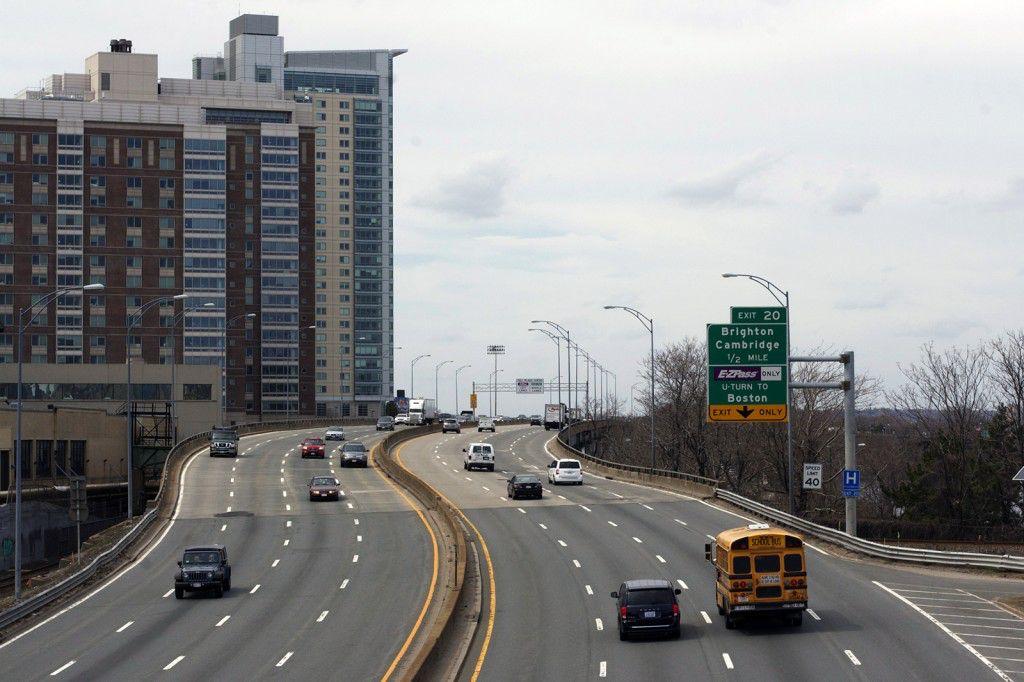Fifty years ago, Allston was the gritty neighborhood home to a potpourri of blue-collar workers and their families. Today, Allston is the prime spot for college students looking for cheap rent and fun parties. But 50 years from now, Allston may be a high-tech transportation paradise unrecognizable from any of its former incarnations.
On Tuesday, Massachusetts Gov. Deval Patrick announced a plan to straighten the structure of the Massachusetts Turnpike and construct a $20 million commuter rail stop in the Boston neighborhood of Allston. Besides improving transportation in all modes throughout the city, this project is key in connecting Allston with its disjointed neighbor, Cambridge, home to Harvard University.
The commuter rail station is to be built on the Beacon Park Yard, a 22-acre property owned by Harvard University, and Harvard has pledged to fund one-third of the project. The Commonwealth will fund another third. When a reporter asked Patrick at the Tuesday press conference if Boston University would fund the other third, he replied, “No comment.”
BU and the Commonwealth aside, Harvard has some pretty grand plans behind the development of Allston. True, their athletic facilities and the Harvard Business School already call Allston home, but ever since 2003, when Harvard purchased 91 acres of Allston land for $75 million, the university has been working to spread their Cambridge roots further into the city of Boston.
A Harvard-Allston Task Force has been in place since 2006 to formulate Harvard’s plans for its Allston development, and with its role in funding the new transportation plans, it seems their development goals are beginning to take shape.
“Harvard owns a lot of land there,” said Gerald Autler, senior project manager and planner of the Boston Redevelopment Authority. “Their expansion opportunities in Cambridge are limited, and they clearly saw an opportunity…Harvard is 400 years old, and I assume they’re looking at opportunities for expansion and growth for the next 400 years. They happen to be close to an area of Allston where there’s land that is underutilized and available for development over the shorter term or longer term.”
Clearly, bridging the gap between Cambridge and Allston is akin to Harvard’s interests in establishing itself further in Allston. But these plans encompass more than just simplifying transportation access. Harvard’s plans could include residences for graduate students and faculty, among other facilities. Additionally, developers are looking to Allston for new rental apartments, retail establishments, restaurants and even a home for tech industries, Autler said.
“We think that’s going to be important to not only help Boston meet its housing goals, but also to create a vibrant neighborhood in Allston, specifically in increasing the number of commercial uses — biotech and so on — they’d like to follow a Massachusetts Institute of Technology model and create a sort of Kendall Square,” he said. “We see Allston as an area that could be a huge economic development asset and attract those kind of commercial and academic uses, but also have residential and supporting uses in the mix.”
Between unlivable apartments, corrupt landlords and the sick joys of “Allston Christmas,” Allston’s one-stop junkyard for leftover furniture when students move in and out of their apartments, Allston is begging for a facelift. There is little doubt these new plans to transform the neighborhood into a vibrant and trendy hub will render impressive results, or at least clean the place up a bit. Plus, these new transportation facilities point to Boston’s development goals finally coming into fruition. But the key element that makes Allston so attractive to its current residency — largely students and immigrants — is its low-cost living, and making the neighborhood nicer will surely cause a jump in housing prices.
What would Allston be without the beloved mom-and-pop businesses and restaurants lining its streets? Surely, Mom and Pop won’t be able to afford the inevitable rent hike attached to Allston’s gentrification. The infamous “Allston Crawl,” so akin to many BU students’ freshman experience, may go extinct if there are no dilapidated party houses left to crawl to. College students all throughout Boston, most notably here at BU, call Allston home, and it would be a shame for them to have to relocate.
With Harvard funding one-third of the new construction and Massachusetts spotting the other, there still looms an unannounced third donor. Will BU step up to the plate? While discussions over BU’s role in the project may already be in the works, claiming a part of the project would be in our best interest. Too many BU students live in Allston for the administration to ignore the changes taking place there. Funding a portion of the project would not only ensure BU students are accommodated, but also prove BU’s dedication to the betterment of Boston.
Will it really be Allston anymore if someone scrubs out the “Keep Allston Shitty,” so lovingly scrawled on the sidewalk? Maybe not. But if BU stakes a claim in Allston’s redevelopment, perhaps the student culture may survive.























































































































Richard • Oct 2, 2014 at 3:21 pm
I have my doubts that the student culture will survive after BU’s role in changing Kenmore Square.